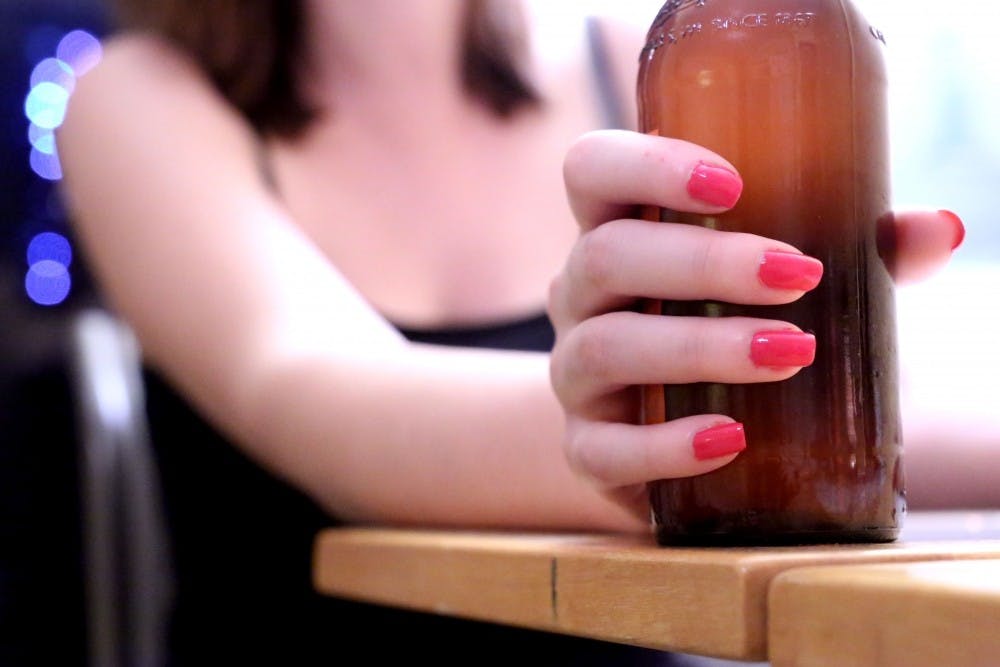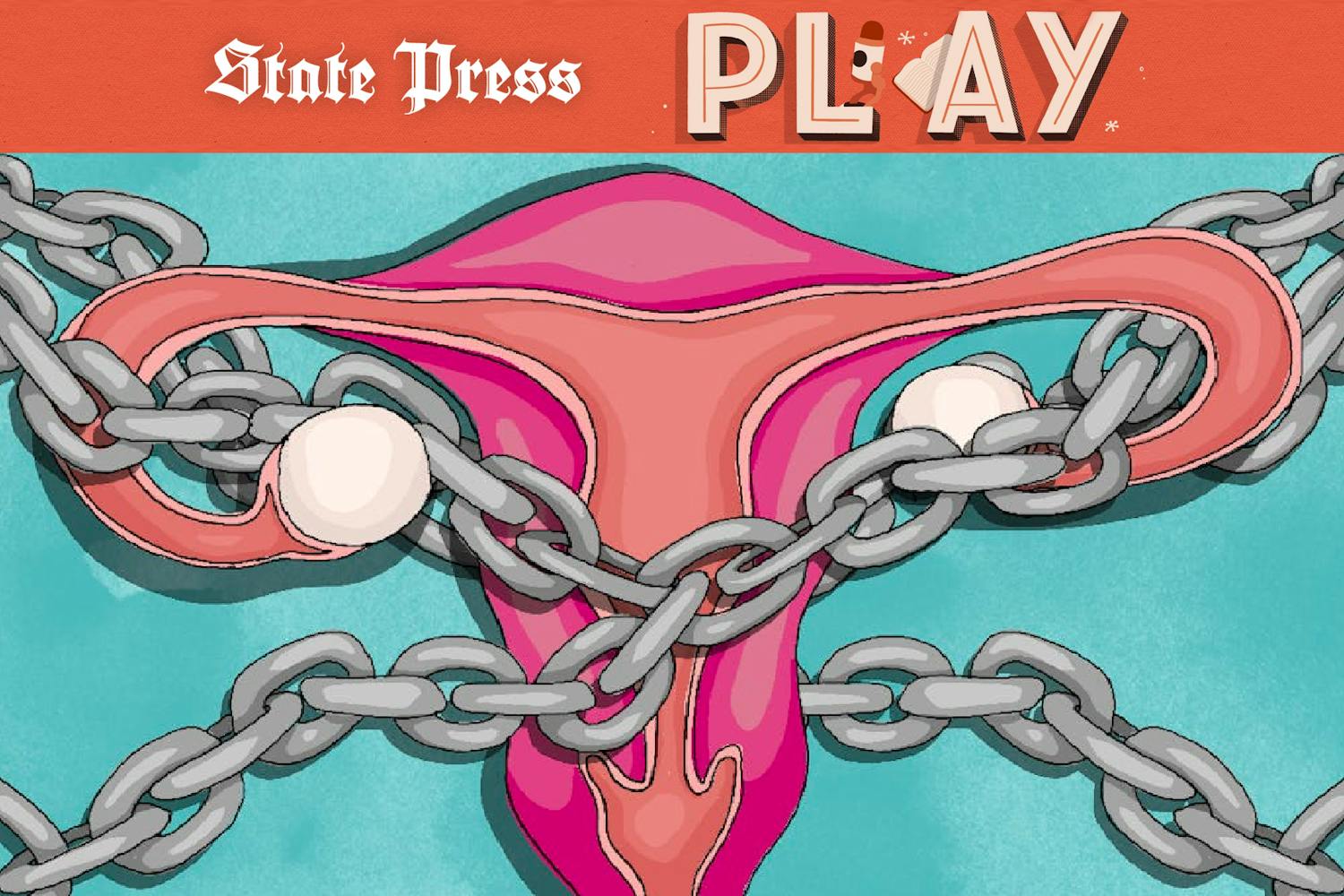This April, ASU and college campuses across the country are marking Sexual Assault Awareness Month through events to "raise public awareness about sexual violence, and educate communities about prevention." Sexual Assault Awareness Month is organized by the National Sexual Violence Resource Center (NSVRC), and this year's theme is "Prevention is Possible."
In its explanation of this year's theme, NSVRC notes, "Prevention strategies that address the root causes and social norms that allow sexual violence to exist in the first place are the most effective."
Unfortunately, some of the "root causes and social norms that allow sexual violence to exist in the first place" are in fact perpetuated in campus discourse on sexual assault prevention.
Last week, I was on a run near Lot 59 on the Tempe campus when I saw an advertisement on the side of a FLASH Forward bus stop. The advertisement read "Educate Yourself: More than 97,000 students are victims of alcohol-related sexual assault or date rape each year."
Of course, I think it's incredibly important to bring attention to the incidence of sexual assault on college campuses. But this ad seems problematic in a number of ways. First, it implies some responsibility for the sexual assault on the part of the survivor of the assault. It's as if the message is, "If you choose to drink, you're responsible for the risk of sexual assault entailed."
What's more, the message ("Educate yourself") seems to shift the responsibility to prevent assault to the survivors themselves, as if students have a duty to prevent their own victimization.
In truth, students do not have a duty to prevent themselves from being assaulted. Instead, students have a right to be protected against sexual assault.
Under Title IX, ASU has a responsibility to provide this protection, and to create an environment of non-discrimination where its students can feel safe. ASU is currently being investigated by the federal government for "possible violations of federal law over the handling of sexual violence and harassment complaints."
The ad I saw at the bus stop was written by collegedrinkingprevention.gov, and the ad space was sold by MSS Media. I tried to reach out to collegedrinkingprevention.gov, but the email address provided on their website is no longer valid.
Although ASU wasn't involved in this messaging, many ASU materials on sexual assault prevention also echo similar messages, emphasizing the role of alcohol in sexual assault.
For example, in the Community of Care course for new ASU students, the video on sexual violence notes "70 percent of sexual assault cases involve alcohol" insofar as the "survivor or perpetrator had been drinking prior to the assault." The video on alcohol notes, "Alcohol can lead to sexual misconduct, dating violence and assault" which it describes as "bad behaviors. :( "
In its "Crime Prevention Tips" for sexual violence, ASU police notes that, "If you do decide to drink alcohol, do so in moderation. Alcohol and drugs limit your ability to make good decisions for yourself."
I want to be clear about the fact that I think educating students about alcohol consumption, and safety is absolutely vital, and I'm glad that the university is taking steps to do so. The University Office of Educational Outreach and Student Services emphasized that their messaging is never about blame, and focuses on "proactive ways to prevent violence."
#SAAM consent is... pic.twitter.com/6LYR6N2kQO
— ASU Police (@ASUPolice) April 8, 2016
Still, messaging that characterizes alcohol as "leading to sexual misconduct" implies that sexual assault occurs because a survivor wasn't "being smart about alcohol" is problematic because it may make a survivor feel as though they have some responsibility for being assaulted, which is never true. Implying that someone's failure to make "good decisions for themselves" causes sexual violence is incorrect. A survivor does not choose to be assaulted. And characterizing "sexual misconduct, dating violence and assault" as "bad behaviors :(" when they are actually crimes is offensive.
A New York Times Opinion piece on sexual assault and victim blaming put it nicely:
"The common advice we hear about 'how not to get raped' – stay sober, use a buddy system – isn’t just ineffective. It also preserves the power structures that perpetuate violence. Conversations about rape often ease assailants’ culpability by fixating on strategies survivors supposedly should have used to avoid assault. These tactics are detached from the reality of sexual violence. Most survivors – women, men and gender-nonconforming people – know their assailant, and drunken people do not stumble into getting raped; rapists use alcohol as a weapon ... in the face of this violence, we demand that the victimized sacrifice their freedom and adjust their behavior so we don’t have to disturb the status quo."
Alcohol does not cause sexual assault or rape. Alcohol is a tool that some perpetrators of sexual assault use to commit their crime. It's time to stop blaming survivors for which weapon their perpetrator chose to use to commit assault.
In addition, educational outreach that emphasizes the role of alcohol aligns with a traditional characterization of sexual violence crimes. This traditional characterization may ignore the variety of forms sexual violence crimes can take. According to Jasmine Lester, the Founding Director of Sun Devils Against Sexual Assault, "Many university prevention efforts reflect the idea that sexual assault only occurs in party situations." In reality, sexual assault can occur in a wide variety of different environments involving a wide variety of different factors. While it's true that the majority of reported sexual assault cases involve alcohol, it's important that we don't just paint one uniform picture of sexual assault.
Lester argues that it's "dangerous to characterize sexual assault in only one way," and said she's spoken to survivors who have said they wished they had education about the different forms of sexual assault, like assault involving power imbalances. Without holistic education, sexual harassment and violence may be hard for a survivor to identify.
Barrett, the Honors College at ASU, Is a Close-Knit Community; Some Say Too Close http://t.co/yNNbLA7Vu6
— SDASA (@asu_sdasa) January 8, 2015
Ultimately, as the Rape Crisis Network of Ireland notes, "A victim of rape, whether or not intoxicated, is not responsible for their victimization. Attitudes that blame victims of rape excuse perpetrators and reduce the likelihood of the prosecution of rapists. Such attitudes thus increase everyone’s vulnerability to rape."
It's important to promote responsible alcohol consumption. But in the context of Sexual Assault Awareness Month, we need to make sure that educational messaging doesn't imply that students were assaulted because they weren't making responsible decisions. Educational outreach needs to be supportive, inclusive and accurate, and if they do choose to report, survivors should not have to fear that they will be blamed for their assault. Students have the right to be protected.
Reach the columnist at maarmst7@asu.edu or follow @MiaAArmstrong on Twitter.
Editor’s note: The opinions presented in this column are the author’s and do not imply any endorsement from The State Press or its editors.
Want to join the conversation? Send an email to opiniondesk.statepress@gmail.com. Keep letters under 300 words and be sure to include your university affiliation. Anonymity will not be granted.
Like The State Press on Facebook and follow @statepress on Twitter.




